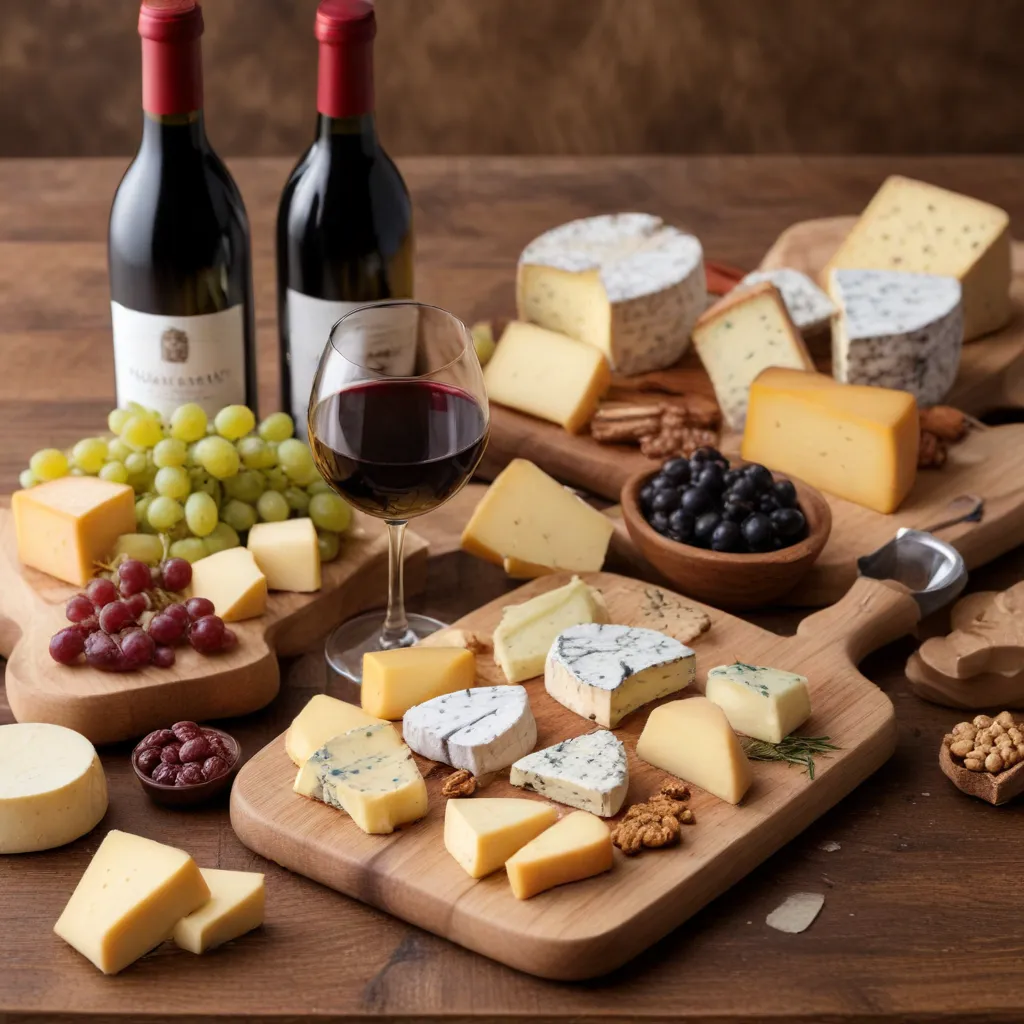
When it comes to the art of culinary pairing, few combinations are as classic and delightful as wine and cheese. This harmonious duo has the power to elevate the dining experience, creating a symphony of flavors that captivates the senses. At the Wine Garden Inn, we believe in the profound joy that arises from mastering the art of wine and cheese pairings.
In this comprehensive guide, we’ll unveil the secrets behind crafting perfect pairings, empowering you to embark on your own culinary adventure. Whether you’re hosting a gathering or indulging in a quiet evening at home, understanding the principles of pairing wine and cheese will heighten your appreciation for these two timeless pleasures.
Wine Characteristics
The foundation of any exceptional pairing lies in understanding the nuanced qualities of wine. From the diverse varietal profiles to the subtle interplay of acidity, tannins, and body, each wine offers a unique story waiting to be told.
Varietals and Appellations
The world of wine is a tapestry of diverse grape varietals, each with its own distinct personality. From the bold and structured Cabernet Sauvignon to the delicate and aromatic Chardonnay, each varietal brings a unique set of flavors and characteristics to the table.
Pairing wine with cheese is also influenced by the wine’s appellation – the geographic region where it was produced. Wines from different appellations can showcase vastly different flavor profiles, which can profoundly impact the harmony of a pairing.
Tasting Notes and Flavor Profiles
When exploring the world of wine and cheese pairings, it’s essential to consider the wine’s tasting notes and flavor profiles. A wine’s aroma, fruity or floral character, and spicy undertones can all play a crucial role in determining the perfect cheese companion.
Acidity, Tannins, and Body
The interplay of a wine’s acidity, tannins, and body is another crucial factor in pairing. Acidic wines can help to cut through the richness of certain cheeses, while tannic wines can balance the creaminess of others. The overall weight and mouthfeel of the wine must also be considered to ensure a harmonious pairing.
Cheese Types
Much like the world of wine, the realm of cheese is a diverse and captivating one. From the firm and nutty to the soft and creamy, each cheese offers its own unique flavor profile and textural characteristics.
Hard and Semi-Hard Cheeses
Hard and semi-hard cheeses, such as Cheddar, Gouda, and Gruyère, are renowned for their robust flavors and firm, structured textures. These cheeses often pair well with full-bodied red wines, whose tannins and acidity can balance the cheese’s richness.
Soft and Creamy Cheeses
Soft and creamy cheeses, like Brie, Camembert, and Burrata, offer a luscious and indulgent mouthfeel. These cheeses find harmony with light-bodied white wines or crisp, refreshing sparkling wines, whose acidity can cut through the cheese’s creaminess.
Blue and Washed-Rind Cheeses
The bold and pungent flavors of blue cheeses, such as Gorgonzola and Roquefort, as well as washed-rind cheeses like Époisses, require equally assertive wine companions. These cheeses often pair beautifully with sweet dessert wines or full-bodied reds, whose complexity can stand up to the cheese’s intensity.
Pairing Principles
To craft the perfect wine and cheese pairing, it’s crucial to understand the fundamental principles that govern this harmonious union. By considering the interplay of flavors, textures, and overall balance, you can create captivating culinary experiences that delight the senses.
Complementary Flavors
One of the key principles of pairing wine and cheese is finding complementary flavors. This can involve matching the wine’s fruity or herbal notes with the cheese’s nutty or earthy tones, or creating a delightful contrast between the wine’s acidity and the cheese’s creaminess.
Matching Texture and Mouthfeel
The texture and mouthfeel of both the wine and cheese must also be taken into account. A rich, creamy cheese may pair better with a smooth, medium-bodied wine, while a firm, crumbly cheese could complement a more structured, tannic red.
Balancing Acidity and Sweetness
The interplay of acidity and sweetness is another essential factor in pairing. Acidic wines can help to cut through the richness of certain cheeses, while sweeter wines can balance the sharpness of more pungent varieties. Finding this delicate balance is key to creating harmonious pairings.
Specific Pairings
Now that we’ve explored the fundamental principles of pairing wine and cheese, let’s dive into some specific combinations that are sure to delight your palate.
Red Wine and Aged Cheddar
The bold, robust flavors of a well-aged Cheddar cheese find a perfect match in a full-bodied red wine, such as a Cabernet Sauvignon or a Malbec. The wine’s tannins and acidity complement the cheese’s sharp, nutty notes, creating a harmonious balance on the palate.
White Wine and Brie
The creamy, velvety texture of a Brie cheese pairs beautifully with a crisp, light-bodied white wine, like a Sauvignon Blanc or a Chardonnay. The wine’s acidity helps to cut through the cheese’s richness, while the cheese’s creaminess softens the wine’s edges, resulting in a delightful, well-rounded experience.
Sparkling Wine and Goat Cheese
The delicate, tangy flavors of a goat cheese find a sparkling companion in a dry, effervescent wine, such as a Prosecco or a Champagne. The wine’s bubbles and acidity cleanse the palate, perfectly complementing the cheese’s subtle nuances and creating a refreshing, harmonious pairing.
As you embark on your own culinary adventure, remember that the art of pairing wine and cheese is a journey of exploration and discovery. By understanding the fundamental principles and experimenting with different combinations, you’ll unlock a world of gastronomic delights that will leave a lasting impression on your palate. So, raise a glass, pair it with your favorite cheese, and indulge in the harmonious symphony of flavors that awaits.
